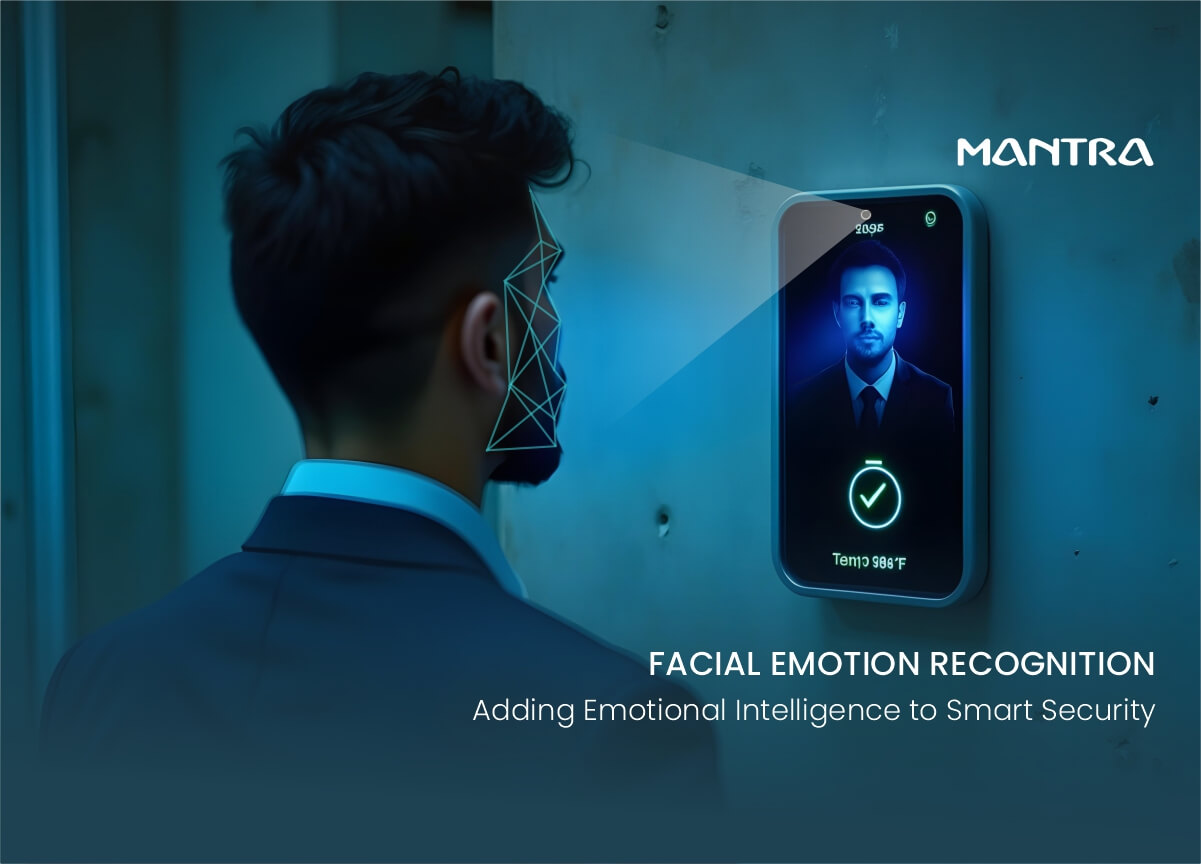
Facial recognition has revolutionized how we authenticate identities, secure access, and track movement. But what if cameras could also understand how we feel? What if machines could detect not just who you are-but what emotional state you're in?
Welcome to the world of Facial Emotion Recognition (FER)-a cutting-edge AI capability that analyzes facial expressions to interpret human emotions in real time. At Mantra Softech, we see FER as a powerful extension of biometric technology-enhancing not only security and surveillance but also user experience, workplace safety, and even healthcare diagnostics.
What is Facial Emotion Recognition?
Facial Emotion Recognition (FER) is an advanced AI technology that uses computer vision and deep learning to analyze a person's facial features and classify them into emotional states-such as happiness, sadness, anger, surprise, fear, or neutrality.
It works by mapping key facial landmarks-like eyebrows, eyes, lips, and cheeks-and detecting subtle muscle movements, angles, and patterns. These inputs are then processed through trained algorithms to determine the emotional expression in a fraction of a second.
When combined with facial recognition for identity, FER enables systems to recognize who a person is and how they're feeling-creating an entirely new layer of intelligence in human-computer interaction.
How Facial Emotion Recognition Works
Face Detection
The system first detects and isolates a face in real-time video or still images.
Feature Extraction
Key facial points (like eye corners, mouth curves, jawlines) are mapped using algorithms.
Emotion Classification
Using AI models trained on large emotion datasets, the system classifies the facial expression into predefined emotional categories.
Real-Time Output
The result is displayed or recorded-showing the emotional state, intensity, and duration.
This process can run in real time on cameras, edge devices, or cloud platforms-making it suitable for diverse applications across industries.
Real-World Applications of Facial Emotion Recognition
Smart Surveillance & Law Enforcement
Emotion detection can help monitor suspicious behavior in public places. Identifying stress, fear, or aggression in real-time enables proactive intervention-especially in airports, stations, or crowded events.
Retail & Customer Experience
Businesses can measure customer reactions to products, advertisements, or service experiences-offering insights into brand engagement and satisfaction.
Healthcare & Mental Wellness
FER can assist in diagnosing emotional disorders, monitoring therapy progress, or detecting signs of depression, anxiety, or distress in patients-especially in telemedicine scenarios.
Education & E-Learning
Teachers and e-learning platforms can assess student attention, frustration, or confusion-enabling more adaptive learning systems.
Workplace Productivity & HR
FER can be used in employee well-being initiatives-monitoring mood patterns, burnout signs, or even during recruitment to assess soft skills and emotional responses.
Automotive & Transportation
In vehicles, FER can detect drowsiness, distraction, or emotional distress in drivers-triggering alerts to prevent accidents.
How Mantra Softech is Exploring Emotion-Aware Biometrics
At Mantra Softech, our expertise in facial recognition and computer vision lays the perfect foundation to extend our solutions into emotion AI. Our R&D teams are actively exploring:
Edge-AI based FER algorithms for on-device emotion recognition
FER integration with access control for restricted zones (e.g., detecting stress in secure government facilities)
AI dashboards for emotional analytics in retail and banking environments
Behavioral profiling modules for smart surveillance and forensic intelligence
By combining identity, behavior, and emotion, we aim to create multi-dimensional biometric systems that understand people beyond authentication.
Ethical Considerations and Privacy
While emotion recognition opens new doors, it also raises important questions:
Is the data collected consensual and transparent?
How accurate is emotion detection across different genders, ages, and ethnicities?
Can emotion data be misinterpreted or misused?
At Mantra Softech, we're committed to ethical AI development. Our solutions follow principles of privacy, transparency, and fairness. We ensure FER modules are used with consent, comply with local data protection laws, and are tuned to minimize algorithmic bias.
The Future of Emotion-Aware Systems
The fusion of facial recognition and emotional intelligence is just the beginning. As AI becomes more intuitive, we'll see applications where:
Airports adjust security screening based on traveler stress levels
Banks personalize service based on facial cues
Smart cities detect panic in crowds and trigger real-time alerts
Virtual assistants adapt to user moods for better interaction
Emotion-aware systems will become an integral part of contextual intelligence-making digital systems not only secure but also empathetic.
Conclusion: When Identity Meets Emotion
In a world increasingly driven by automation and AI, emotion remains the most human element. By recognizing emotional states through facial expression analysis, machines can better interact with people-not just as users, but as individuals.
At Mantra Softech, we're building the future of biometric systems-where facial recognition doesn't stop at who you are, but goes further to understand how you feel. This is the next frontier in smart security, human-centered design, and AI-driven transformation.
Discover the future of AI-driven, emotion-aware facial recognition
Contact Us
Comments